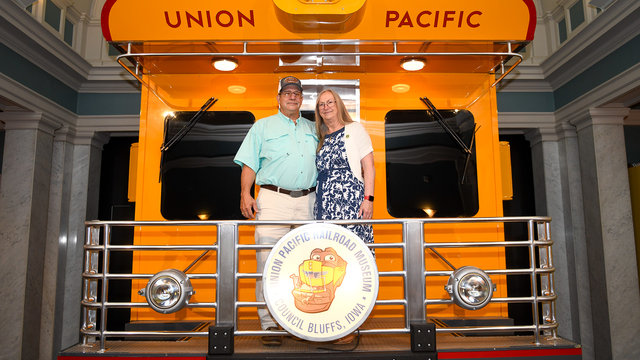
July 16, 2025
Reflections of a 50-Year Tech Career: A Journey of Change

I joined Missouri Pacific Railroad directly out of college on Nov. 1, 1974. My first job was as a programmer working on the TCS Equipment Distribution System. I joined at a salary of $10,000 per year – a significant amount for a rural Illinois girl and the first in my family to earn a degree.
In summer 1975, with less than a year’s experience, I was asked to help implement the new TCS Car and Train Movement System (TCS 4.1). I spent December in Harlingen, Texas, training the field team on TCS 4.1 – and discovering my passion for data and developing transportation applications. The experience made the railroad come to life for me and was the beginning of my love of railroading.
TCS 4.1 was a major change: it used key punched card decks and card readers to report car and train movement. It was later documented as a rail industry first, second only to NASA for technology advancement. Prior to its implementation, the railroad primarily operated by paper and pencil, and phone calls.
I advanced from coder to project leader in 1978, managing a team that was developing a crew dispatching application. I found a new passion – I loved working with labor relations, field officers and union representatives to automate agreements into rule-based mainframe computer code that decided which employees should be called and generated payments due.
In the mid-1980s, we were busy combining Missouri Pacific and Union Pacific systems. This was the beginning of multiple mergers that required systems to be analyzed, merged and implemented. Every merger brought new challenges, but the dedication of our employees made each successful.
The 90s saw the beginning of new server applications – too numerous to mention – being built as satellite applications to TCS. Along with technical advancements that drove longer and more fuel-efficient trains, we saw the Harriman Dispatching Center become our railroad’s centralized brain.
Then, the new century arrived. In the last 25 years, we’ve seen incredible technological leaps – including mobile devices more powerful than the initial mainframes. We implemented GPS reporting, wireless communications, Positive Train Control and a new Computer-Aided Dispatch system.
And in 2024, we made history by implementing NetControl, the most advanced transportation management system in the rail industry. We’ll be able to leverage real-time data, artificial intelligence and machine learning to unlock and drive new opportunities of operational excellence.
I’ve loved watching technology evolve how we railroad, and I’m proud we continue to see more female and cultural diversity in the organization. But what I treasure most are the relationships I’ve built with my peers and business partners.
Two things have remained constant over the past five decades: we still have the best team in the industry, and we still move freight using locomotives and rail cars (we just do it much more safely and efficiently!). People are what make Union Pacific successful – without them, we would not be Building America.
